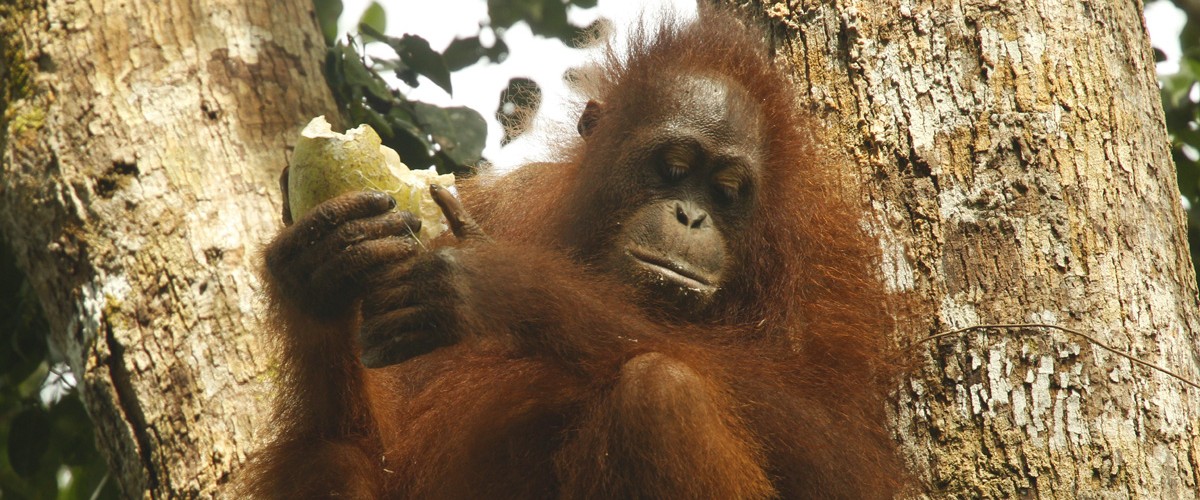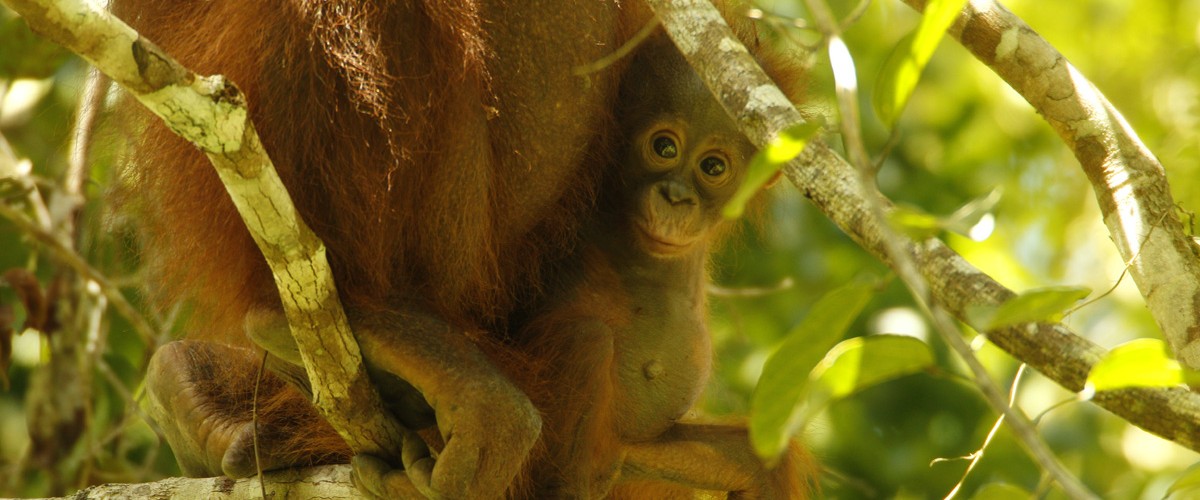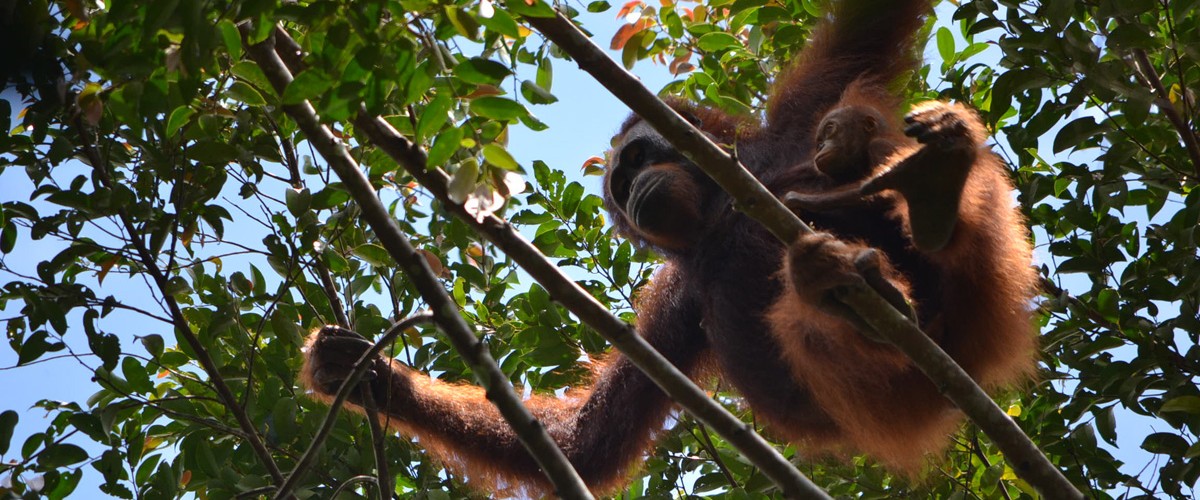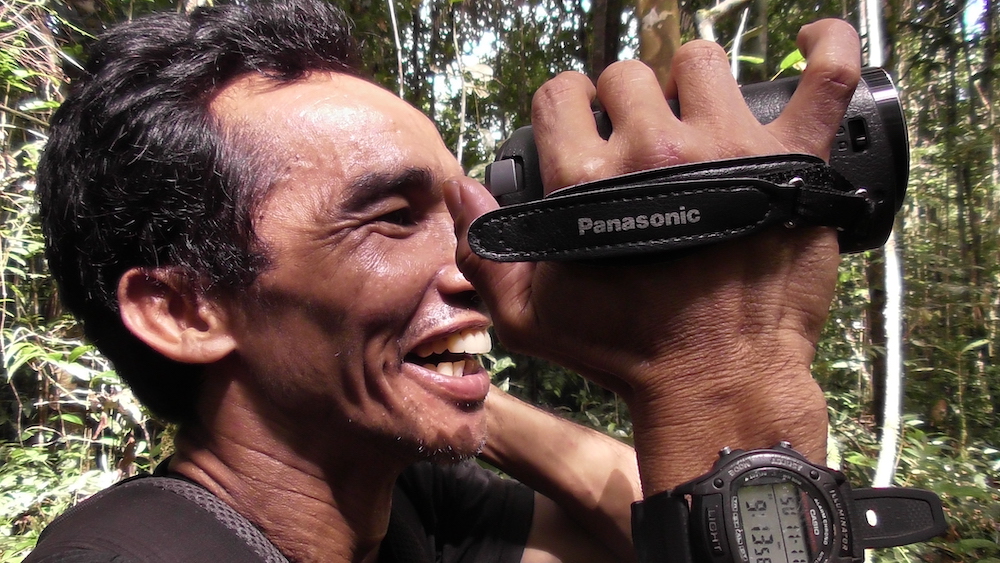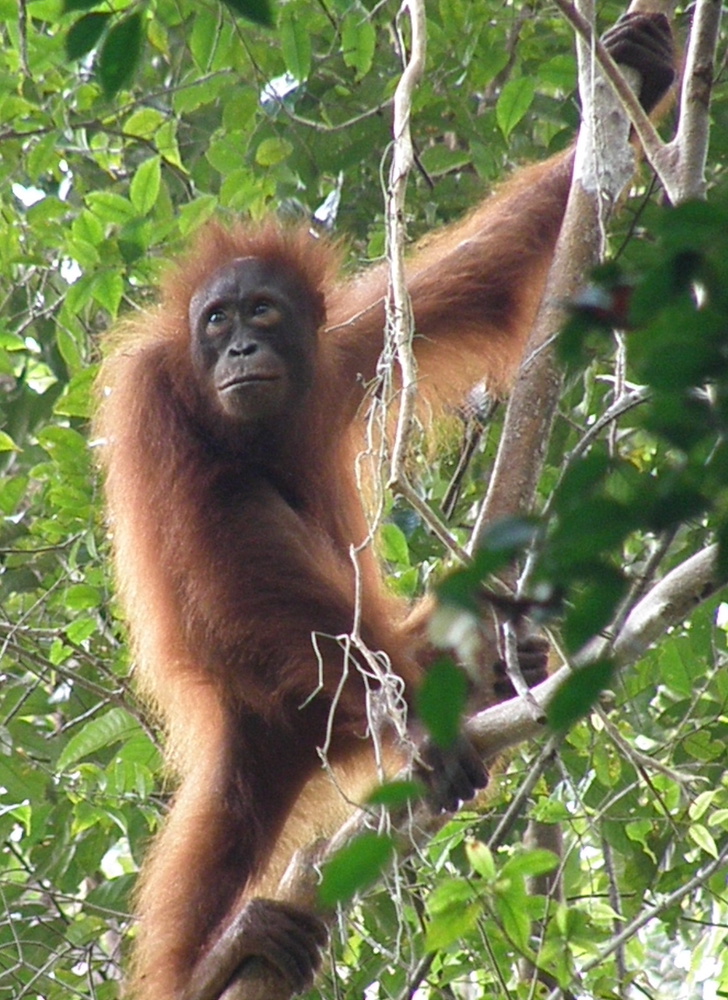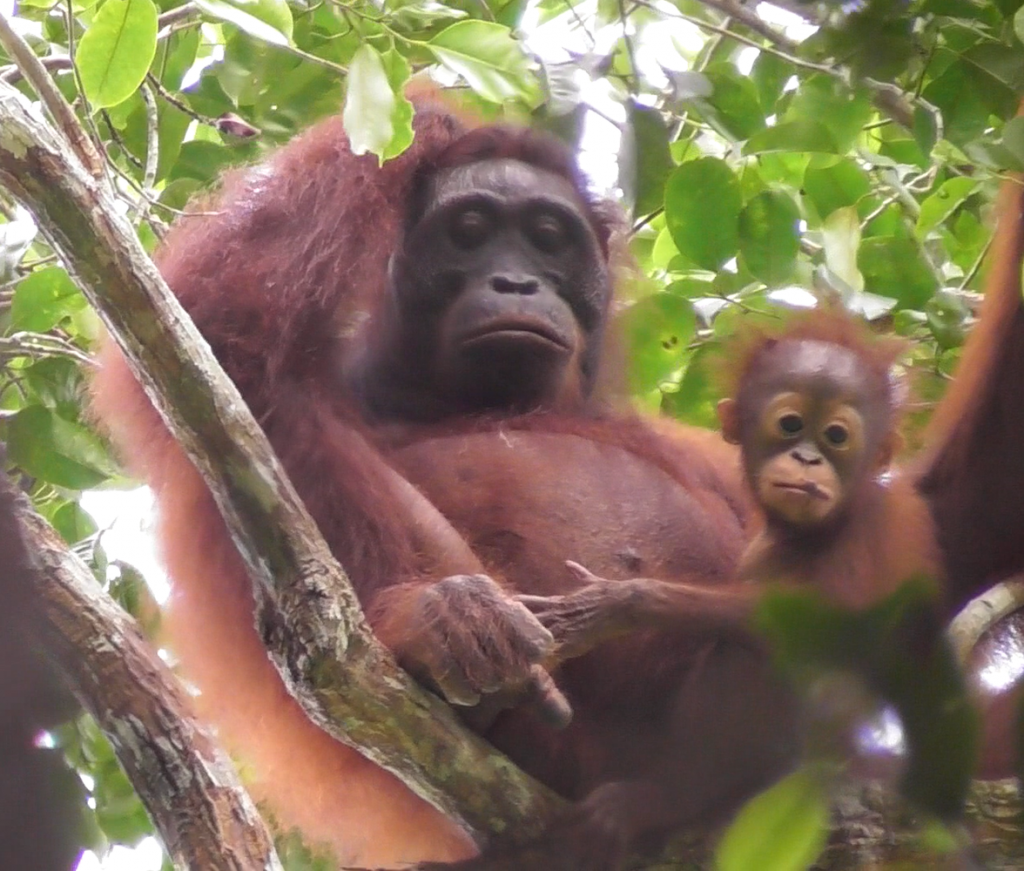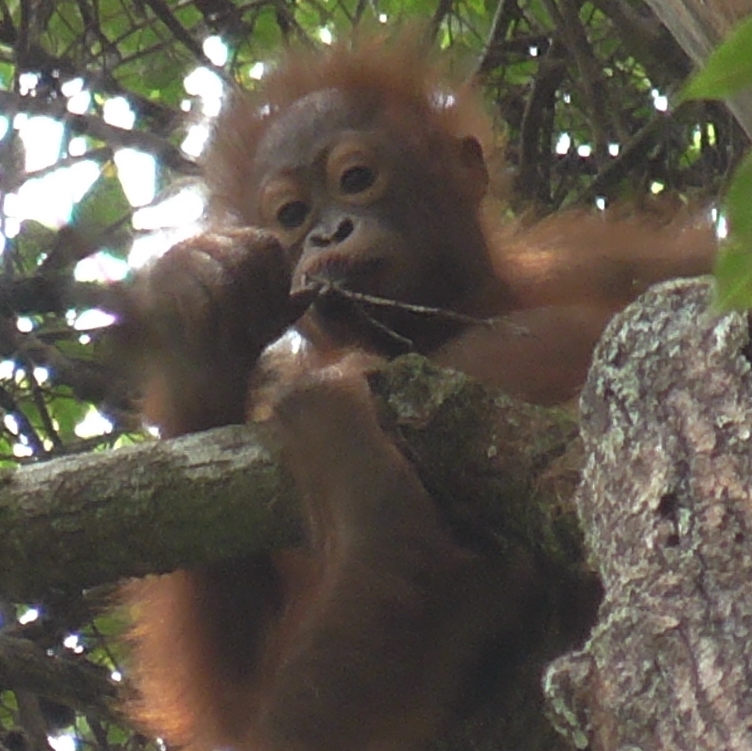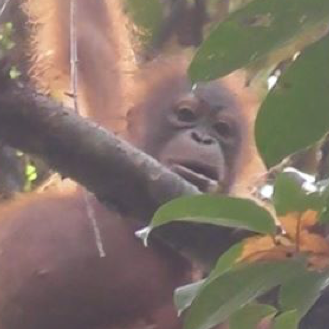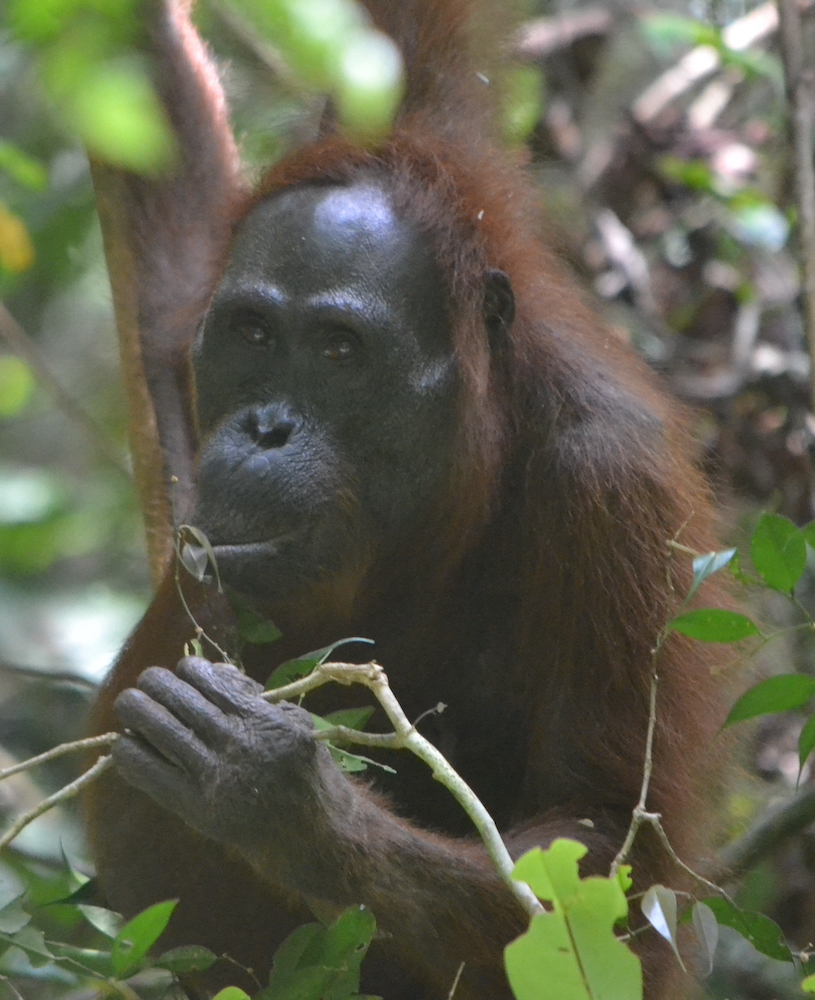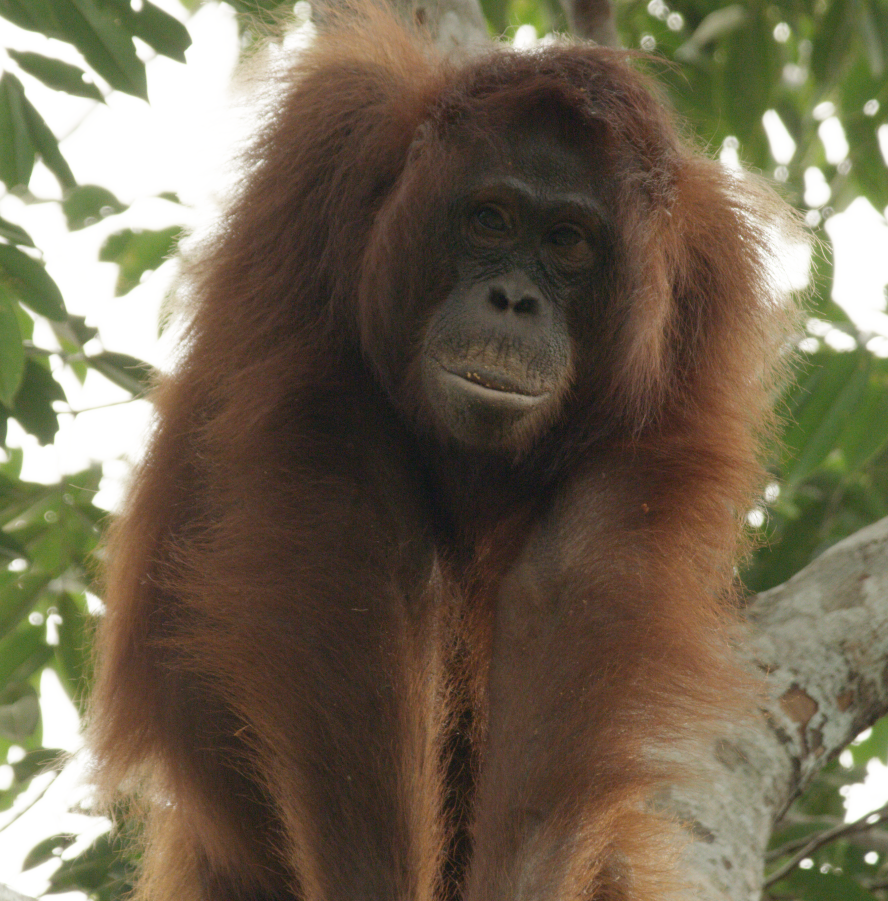By Amy Scott, PhD
The identity of individual orangutans is important to our long-term research as it enables us to track the major milestones of each animal’s life. In particular, it allows us to answer questions about each individual’s developmental trajectory and reproductive history. For instance, because we can identify individuals, we know that Walimah was born on October 30, 1998, and had her first baby in February 2015. But orangutans are notoriously difficult to identify in the field. First, they are primarily arboreal, so we need to use binoculars to learn their faces and other distinctive features, but they are often obstructed by leaves in the canopy. Second, we may only see an individual every few months because orangutans are semi-solitary and have very large home ranges. Third, the easiest way to tell non-human primates apart is by comparing them to others, but we rarely see individuals together in order to compare them.
When I worked as a field assistant studying capuchin monkeys in Costa Rica, I could identify 215 monkeys in nine different groups based on body size and facial features. The hardest monkeys to identify were individuals I found alone because I lacked the context for identifying them. It is similar to when you see someone you know from the gym at the grocery store and it takes a few minutes to figure out who they are and where you know them from. At Gunung Palung, when I’d first find an orangutan in the forest, I often had that familiar feeling — that I’d seen this orangutan before, but I couldn’t quite place them. In order to correctly identify orangutans, our research team always makes use of cameras and handicams to photograph and record videos of the orangutans we follow. When we are unsure of an orangutan’s identity, we use these photos to compare against photos of known individuals. In the evening, after a follow, we sometimes spend hours poring over photos to try to identify an orangutan. Now, thanks to the fastidious collection of fecal samples for genetic identification and funding from the Leakey Foundation and the US Fish and Wildlife Service to perform the genetic lab work, we have some exciting results on the genetic identities of orangutans in Gunung Palung!
One reason that photographic comparison for identification of orangutans is difficult is that we may not see an orangutan for months or years at a time. It can sometimes feel like the popular baby shower game where guests attempt to identify each other from baby pictures. In November 2018, we found a fairly habituated mother with a very young infant. We knew that the mother must have been previously followed because she was not bothered by our presence. After comparing photographs, we decided she looked a lot like another female named Kabar (last followed in 2015), but this did not make sense because Kabar’s offspring would have been about 5 years old, so Kabar would not be expected to have a new baby for another 2-3 years (because orangutans have 7-8 year interbirth intervals). We were stumped by her identity. Genetic analysis revealed that this new mom was Ijal, a juvenile who had not been followed since 2009. No wonder we didn’t recognize her — in the 10 years since we had last seen her, she had grown up from a juvenile to a young mother!
Pictured above is Ijal. The photo on the left is from 2009 when she is a juvenile, approximately 6 years old. The photo on the right is from 2019 when she is a first-time mother, approximately age 16.
The semi-solitary nature of orangutans can make identification very difficult. In March 2017, we followed a new mother-offspring pair for the first time. The mother, then given the name Rossa, was not habituated — she moved quickly, hid from observers, and made kiss squeak vocalizations at observers. Rossa appeared quite young because she had large patches of pink skin around her eyes and mouth, but the juvenile, Ronnie, was estimated to be five years old. We all wondered whether it was possible that Rossa was old enough to be the mother of Ronnie, but the pair acted like they were mother and offspring. Like all mother-offspring pairs, Ronnie often clung to Rossa’s body during travel and they shared a sleeping nest at night. But the genetic identity results showed that Ronnie was actually an orangutan previously identified as Vanna, who was last followed with her mother Veli in August 2016! Based on genetics, Veli is a match as the mother of both Rossa and Vanna/Ronnie. Thus, it seems most likely that at some point between August 2016 and March 2017, Veli died and her youngest daughter, Vanna/Ronnie, began traveling with Veli’s older daughter, Rossa. So Rossa and Vanna/Ronnie are actually sisters who travel together! This is something we had never seen before. Because orangutans are semi-solitary, we had never observed Rossa with her mother Veli, and we needed genetic identification to figure out this puzzle.
Pictured above is Vanna/Ronnie. The picture on the left is Vanna in 2016 and the picture on the right is Ronnie in 2018. Now when we look at these pictures side-by-side, it seems so clear that Ronnie is actually Vanna, but in the field, we typically make identifications based on the mother, since juveniles’ appearances change as they grow.
Veli, the mother of both Rossa and Vanna/Ronnie is pictured on the left. Rossa is pictured on the right. As you can see Veli and Rossa look very different. Because we had never seen Rossa with her mother Veli, we just assumed Rossa and Vanna/Ronnie were a mother-offspring pair that we had never followed before.
Additionally, the fact that male orangutans have very large home ranges and develop cheek flanges makes adult males especially difficult to identify over time. Males have an estimated home range of over 2500 hectares. This means that there are some males who we only see every few years. Males with permanent injuries, like missing fingers, are easier to identify after long periods without seeing them. But if a male has developed cheek flanges since the last time he was seen, he can be difficult to identify because his face and body look so different. Thanks to genetic samples, we were able to track one male, Bilbo (pictured below), over the course of a year as he grew his cheek flanges.

The genetic analysis provided some very unexpected results! Based on their genetic profile, we were able to match orangutans who had not been followed for up to 10 years. And we discovered the heartwarming story of an older sister adopting her little sister after her mother presumably died. We also were able to document, for the first time at our site, the process of a male developing cheek flanges. This genetic data can also be used to determine paternity of orangutans born in Cabang Panti, to measure relatedness between adults, to see if closely related orangutans spend more time together, and to learn more about male development and bi-maturism. Stay tuned for more of our findings!
